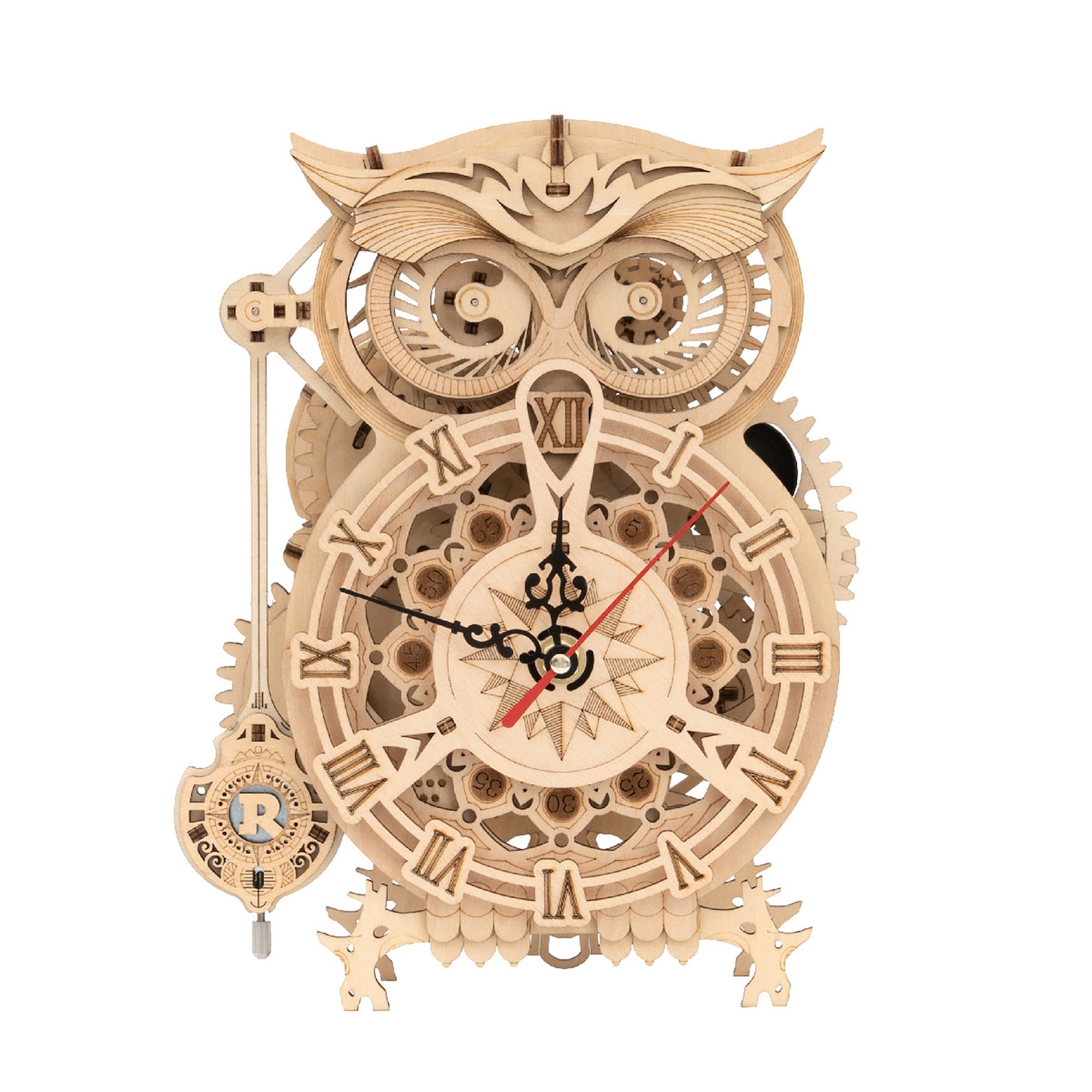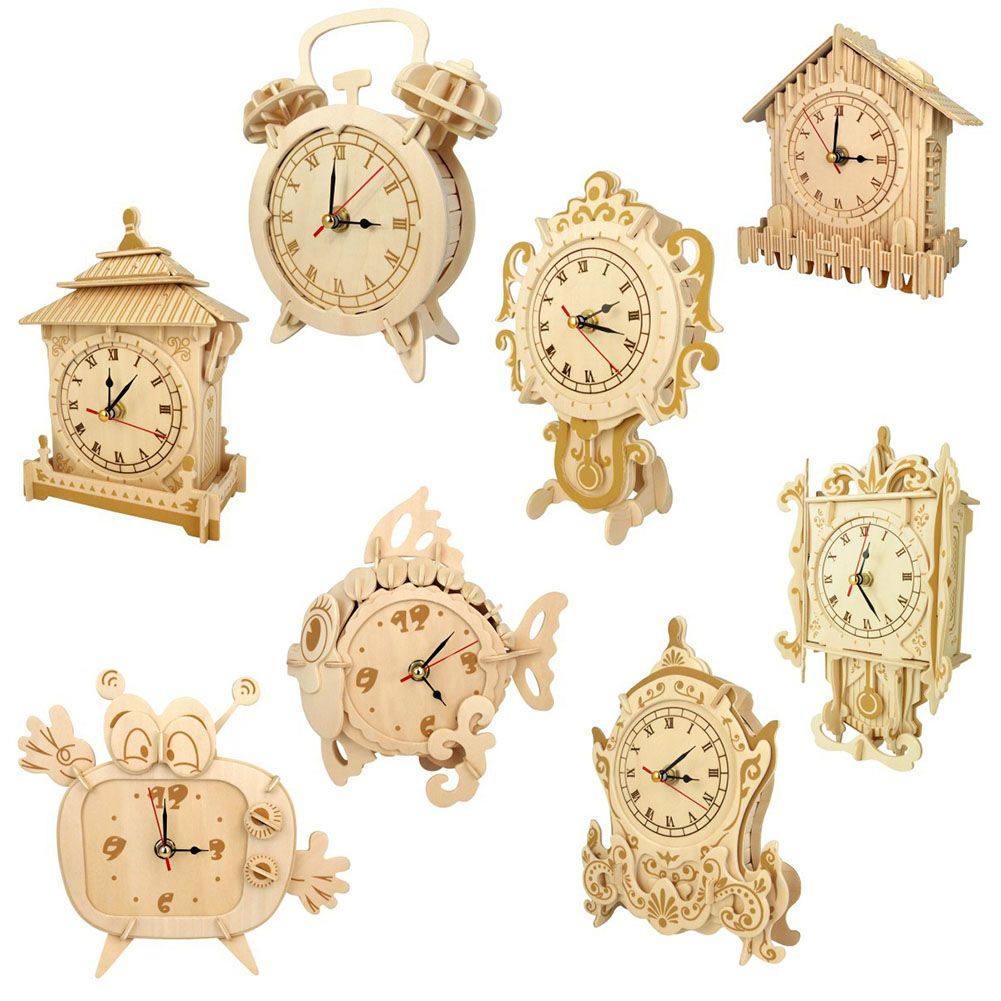


In 1629, many decades before clockmaking was established in the Black Forest, an Augsburg merchant by the name of Philipp Hainhofer (1578–1647) penned one of the first known descriptions of a modern cuckoo clock. Here, the weights and pendulum are purely ornamental as the clock is driven by battery power. The pendulum bob is often another carved leaf. On quartz wall clocks in the traditional style, the weights are conventionally cast in the shape of pine cones made of plastic rather than iron. Whether this is controlled by a light sensor or pre-programmed, the function is referred to as a "night silence" feature. Others are pre-programmed not to strike between a set of pre-determined hours. Uniquely, quartz cuckoo clocks often include a sensor, so that when the lights are turned off at night they automatically silence the hourly chime.

Some musical quartz clocks in the chalet style also reproduce many of the popular automata found on mechanical musical clocks, such as beer drinkers, wood-choppers, and jumping deer. In musical versions, the hourly chime is followed by the replay of one of twelve popular melodies (one for each hour). In quartz cuckoos, different systems have been used to produce the bird's call the usual bellows, a digital recording of a real cuckoo in the wild (with a corresponding echo accompanied by the sound of a waterfall and other birds in the background) or a recording of the bird's call only. The movement of the cuckoo in such clocks is regulated by an electromagnet that pulses on and off, attracting a weight, that acts as a fulcrum, connected to the tail of the plastic cuckoo, thus moving the bird up and down in his enclosure.
#Wooden 3d clock full#
Just before the call, and in case it has a door, the single or double door opens and the bird emerges as usual, but only on the full hour, and they do not have a gong wire chime. As with their mechanical counterparts, the cuckoo bird emerges from its enclosure and moves up and down, but often on the quartz timepieces it also flaps its wings and open its beak while it sings. Since the 1970s, quartz battery-powered cuckoo clocks have become available. The clock's movement activates the bellows to send a puff of air into each pipe alternately when the timekeeper strikes. The weights are made of cast iron usually in a pine cone shape and the "cuckoo" sound is created by two tiny gedackt pipes in the clock, with bellows attached to their tops. Today's cuckoo clocks are almost always weight driven. Musical cuckoo clocks frequently have other automata which move when the music box plays. Usually the melody sounds only at full hours in eight-day clocks and both at full and half hours in the one-day timepieces.

Some have musical devices, and play a tune on a Swiss music box after striking the hours and half-hours. There are two kinds of movements: one-day (30-hour) and eight-day clockworks. The cuckoo bird is activated by the clock movement as the clock strikes by means of an arm that is triggered on the hour and half hour. They have an automaton of a bird that appears through a small trap door when the clock strikes. The classical or traditional type includes two subgroups the carved ones, whose wooden cases are decorated with leaves, animals, etc., and a second one with cases in the shape of a chalet. Many are made in the "traditional style", which are made to hang on a wall. The design of a cuckoo clock is now conventional. It has become a cultural icon of Germany. Today, the cuckoo clock is one of the favourite souvenirs of travellers in Germany, Switzerland and Austria. It is thought that much of its development and evolution was made in the Black Forest area in southwestern Germany (in the modern state of Baden-Württemberg), the region where the cuckoo clock was popularized and from where it was exported to the rest of the world, becoming world-famous from the mid-1850s on. It is unknown who invented the cuckoo clock and where the first one was made. The mechanism to produce the cuckoo call has been in use since the middle of the 1700s and has remained almost without variation. Some move their wings and open and close their beaks while leaning forwards, whereas others have only the bird's body leaning forward. 2006-013Ī cuckoo clock is, typically, a pendulum clock that strikes the hours with a sound like a common cuckoo call and has an automated cuckoo bird that moves with each note. Cuckoo clock, a so-called Jagdstück ("hunt piece"), Black Forest, c.


 0 kommentar(er)
0 kommentar(er)
